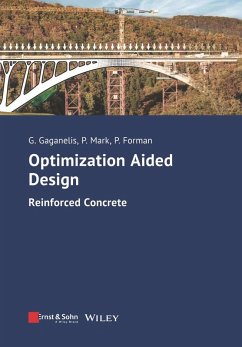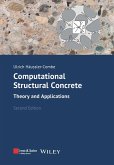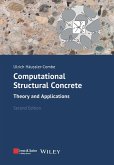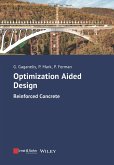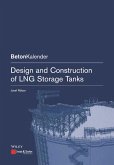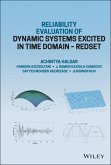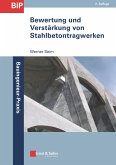Optimization Aided Design provides novel methods to use reinforced concrete in a particularly efficient way. Mathematical optimization is applied to the practical problems of concrete design. The aim is to employ the world's most widely used building material in the most economical way and thus substantially reduce CO2 emissions from cement and steel production as well as resource consumption of gravel, sand and water. Three topics are addressed. First, the identification of the structure. This means the question of the right outer shape such that slender load-bearing designs develop following the flux of forces. In line with the stress affinity of the material, the structures are predominantly subjected to compression. Second, the reinforcement layout, which is oriented to the stress trajectories. Advantages arise particularly for walls, voluminous structural components, load introduction areas and cut-outs. Clear strut-and-tie models emerge that are directly convertible into reinforcement layouts. Third, the treatment of cross-sections. They are optimized in their shape and designed in their reinforcement. This also applies to sophisticated loading conditions (biaxial bending) and virtually arbitrary geometrical configurations. Parameterization allows the transfer to general cross-section types. The optimization aided methods are described extensively and in an illustrative manner. They are universally applicable and independent of standards, concrete types and reinforcements. They apply to normal strength to ultra-high performance concretes, to reinforcements made of steel, carbon or glass fibers, and to rebars as well as reinforcing fibers. Numerous illustrations and computation examples demonstrate their application. Moreover, practical applications are presented, including ultra-light concrete-steel beams, slender concrete solar collectors, and improved reinforcement layouts for tunnel lining. The book addresses students, researchers, and practitioners alike.
Dieser Download kann aus rechtlichen Gründen nur mit Rechnungsadresse in D ausgeliefert werden.
There is hardly a topic among building professionals that is discussed more intensively than sustainable construction. (?) In view of the continuing increase in the world's population, we will not build less, but more. Contrary to this, we need to radically limit resource consumption and CO2 emissions. It is obvious that in the future, building will have to be completely different, not just marginally, but fundamentally. (?)
The methods, procedures and calculations described in this book represent an important step towards a kind of building that has little to do with the way we know it today. And this is a good thing.
(Prof. Dr.-Ing. Dr.-Ing. E. h. Manfred Curbach in his foreword.)
The introduction of state-of-the-art optimization methods [to concrete design] and the resulting minimum-material component shapes, which also have a minimized need for reinforcing steel (?), promote construction with concrete that is characterized by considerable material savings and thus considerable emission savings for the same utility value and durability. Supported by clearly understandable descriptions and a large number of examples, readers will find their way around quickly and easily. This makes it much easier to understand the subject matter, which is not always simple.
This book provides a significant contribution to establishing a new foundation for building with concrete, this wonderful building material for everyone and for almost everything.
(Prof. em. Dr. Dr. E. h. Dr. h. c. Werner Sobek in his foreword.)
The methods, procedures and calculations described in this book represent an important step towards a kind of building that has little to do with the way we know it today. And this is a good thing.
(Prof. Dr.-Ing. Dr.-Ing. E. h. Manfred Curbach in his foreword.)
The introduction of state-of-the-art optimization methods [to concrete design] and the resulting minimum-material component shapes, which also have a minimized need for reinforcing steel (?), promote construction with concrete that is characterized by considerable material savings and thus considerable emission savings for the same utility value and durability. Supported by clearly understandable descriptions and a large number of examples, readers will find their way around quickly and easily. This makes it much easier to understand the subject matter, which is not always simple.
This book provides a significant contribution to establishing a new foundation for building with concrete, this wonderful building material for everyone and for almost everything.
(Prof. em. Dr. Dr. E. h. Dr. h. c. Werner Sobek in his foreword.)

